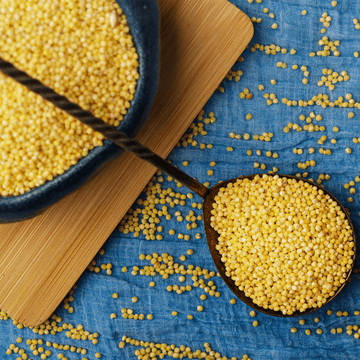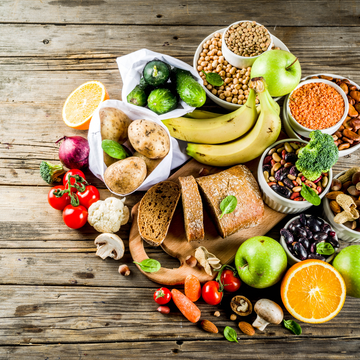Barnyard Millet: A Gluten-Free Marvel for Weight Management and Wellness
by Namita Satheesh on Sep 04, 2023

Introduction
| Barnyard Millet, also known as Sanwa or Udalu in some regions, is a nutritious grain that offers several health benefits. Here are some key points about Barnyard Millet, including its health benefits, nutritional value, and ways to incorporate it into your diet: |
Nutrition of Barnyard Millet:
Essential nutrients: Barnyard Millet is a good source of essential nutrients, including B vitamins such as niacin and thiamin, minerals like magnesium and phosphorus, and antioxidants.
Protein content: It is relatively high in protein compared to other grains, making it a valuable addition to vegetarian or vegan diets.
Low in fat: Barnyard Millet is naturally low in fat, making it a healthier alternative to other grains that may be higher in fat content.
Rich in antioxidants: It contains antioxidants such as phenolic compounds that help protect the body against oxidative stress and promote overall health.
Approximate nutritional value of barnyard millet per 100 grams (cooked):
Calories: ~123 kcal
Carbohydrates: ~28 grams
Protein: ~3 grams
Fat: ~0.6 grams
Fiber: ~3.5 grams
Calcium: ~11 mg
Iron: ~0.8 mg
Magnesium: ~37 mg
Phosphorus: ~74 mg
Potassium: ~77 mg
Vitamin B6 (Pyridoxine): ~0.1 mg
Health Benefits:
1. Gluten-free grain: Barnyard Millet is naturally gluten-free, making it suitable for individuals with gluten sensitivities or celiac disease.
2.Low glycemic index: It has a low glycemic index, which means it causes a slower and more gradual rise in blood sugar levels, making it beneficial for managing diabetes and preventing blood sugar spikes.
3. Digestive health: Barnyard Millet is rich in dietary fiber, which aids in digestion, prevents constipation, and promotes a healthy gut.
4.Weight management: The high fiber content promotes a feeling of fullness, aids in weight management, and helps control cravings and overeating.
5. Nutrient absorption: It contains phytic acid, which can help improve mineral absorption in the body, making the nutrients more bioavailable.
Ways to Use:
Cooked grain: Barnyard Millet can be cooked similarly to rice and used as a side dish or as a replacement for other grains in various recipes.
Porridge: It can be cooked into a warm and comforting porridge by combining it with milk or plant-based milk, sweeteners, and flavorings like cinnamon or cardamom.
Salads and stir-fries: Cooked and cooled Barnyard Millet can be added to salads or stir-fries to enhance their nutritional value and provide a pleasant texture.
Upma or pulao: It can be used to prepare delicious upma or pulao, incorporating vegetables, spices, and herbs for added flavor.
Baking: Ground Barnyard Millet can be used as a flour substitute in baking recipes, such as cookies, muffins, and bread.
By including Barnyard Millet in your diet, you can enjoy its numerous health benefits while adding variety to your meals. Its versatility allows for various culinary applications, making it a valuable ingredient in both savory and sweet dishes. Embracing this nutritious grain can contribute to a balanced and wholesome eating plan.




